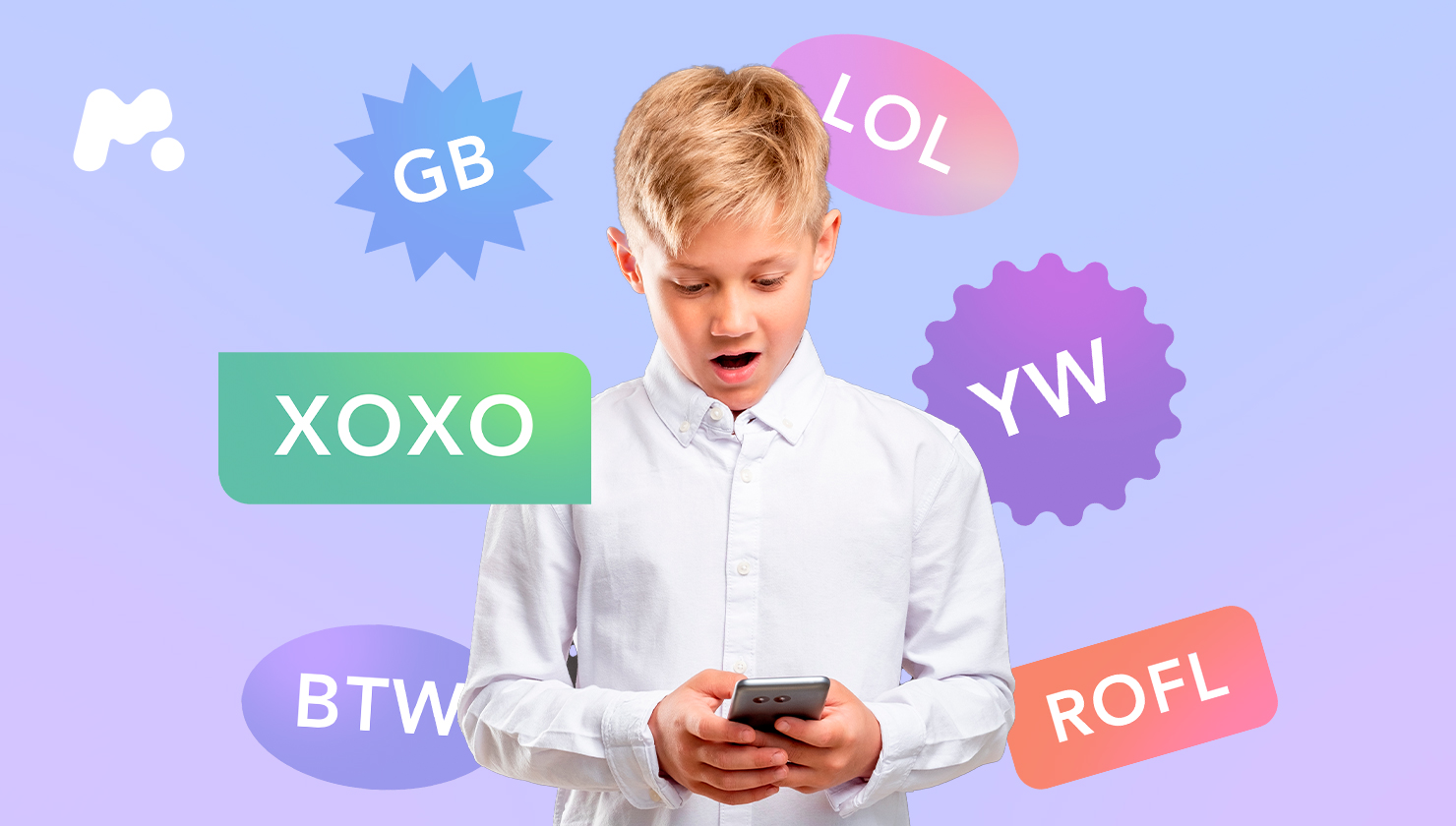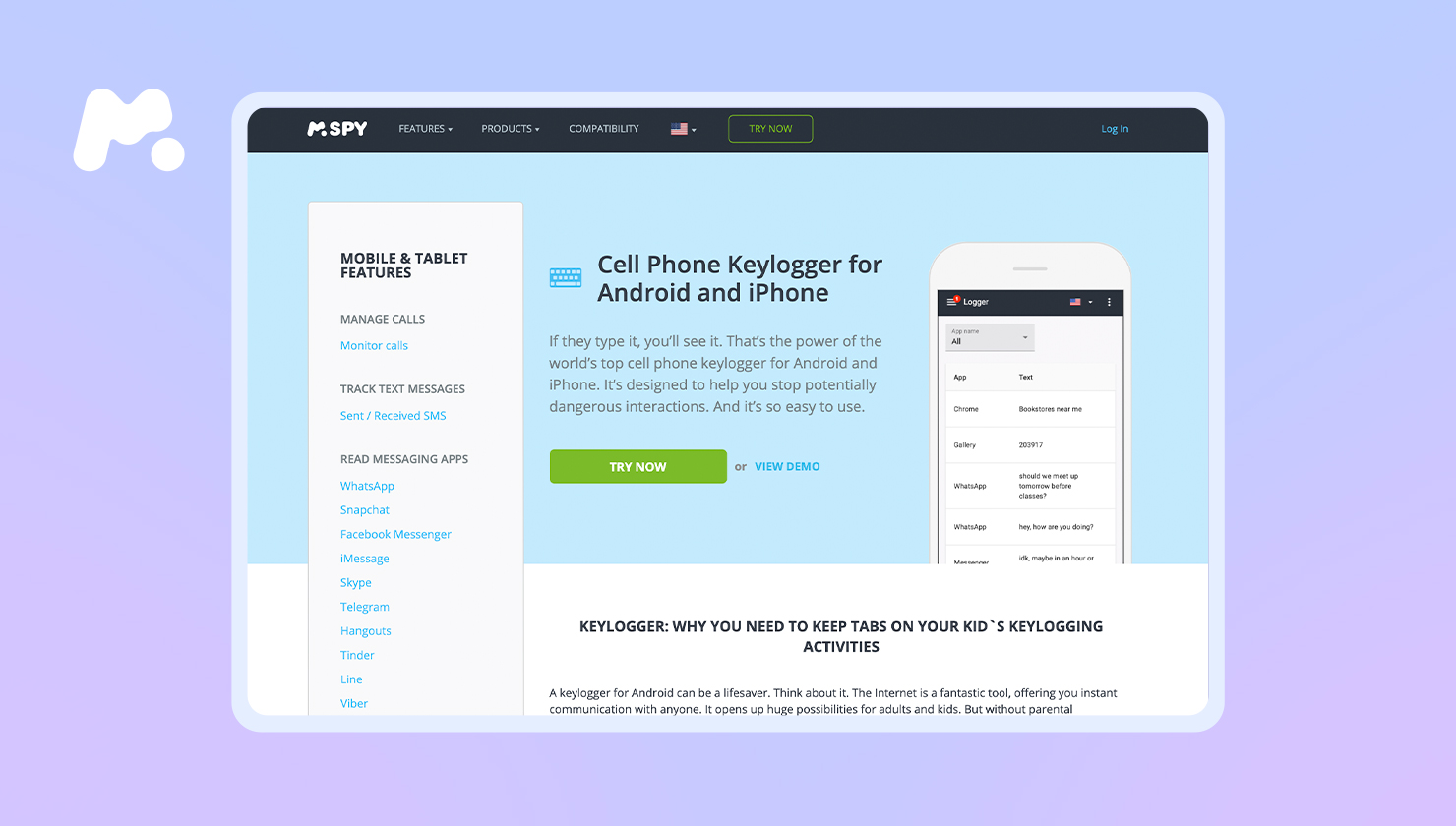

*** This post will be updated as the new acronyms appear.
Have you ever caught your kid texting weird words or unknown abbreviations to friends? If you asked what “PAW, BRB” was and got an explanation: “that was a typo” — they’re fooling you.
Kids are pretty good at technologies and it’s unlikely for them to make so many typos in two words. In a teen’s world, “PAW, BRB” means “Parents are watching, I’ll be right back.” So, if you see them sending strange abbreviations to someone else, be sure it is made on purpose.
As most teens hide their online activity from parents, they face a necessity to text safely, without revealing their real intentions. They often use acronyms to mislead parents and get the message delivered correctly.
Table Of Contents
Teenage Texting Lingo: What Is an Acronym?
Acronyms are abbreviations that consist of the initial letters of multiple words but are pronounced as a single word. Acronyms are extremely popular among kids and teens because. They tend to use them everywhere online, and especially on social media.
Abbreviations become so popular because they allow children to communicate instantly, without typing long pieces of text. Teens also know that parents always keep an eye on them. And that’s another good reason to use abbreviations and slang words in texts. It is a strategy that kids use to prevent adults from overreacting.
If you’re one of those parents who keep asking themselves, “What does FTF mean in texting?” or “What does KMS stand for in texting”, keep reading this article.
Texting Dictionary for Parents: 50 Abbreviations You Didn’t Know About
There are hundreds of acronyms that young people use while texting. They help to shorten commonly used phrases and encode information that kids want to hide from their parents.
Although some acronyms (such as IMHO for “In my humble opinion” or YMMD for “You made my day”) are harmless, others (such as KMS for “kill myself”) can alert you about the danger.
If you wonder what a “THOT” is or confused about the real “SMH” meaning, this article is for you. Below, you will find the top 50 most popular texting codes parents should know about.

General Acronyms
- AF — As f**k
- AFK – Away from keyboard
- AFAIK – As far as I know
- ATM – At the moment
- Bae — Significant other or crush
- Bih — Short form of b*tch
- BRB – Be right back
- BTW – By the way
- Cappin’ — Lying
- Dope — Something extremely cool
- Fam — Friends
- FINSTA — Fake Instagram account
- F2F or FTF – Face to face
- GB – Goodbye
- GLHF – Good luck, have fun
- IMHO – In my honest opinion
- KMS/KYS — Kill myself/Kill yourself
- OFC — Of course
- OTP – On the phone
- SMH – Shaking my head
- TBH — To be honest
- NMU—Not Much, You?
- ILU — I Love You
- HAK — Hugs And Kisses
- IIRC — If I remember correctly
Acronyms for Parents
- CD9 — Parents around/Code 9
- KPC — Keeping parents clueless
- POS — Parent over shoulder
- MOS — Mom Over Shoulder
- PIR — Parent in room
- PAW — Parents are watching
Sexual Abbreviations for Texting
- ASL — Age/sex/location
- Body count — The number of people someone has slept with.
- Daddy — An attractive man, usually older, who conveys a sense of power and dominance
- DTF — Down to f*ck
- FBOI — F**k boy, a guy just looking for sex.
- FWB — Friends with benefits
- GYPO – Get your pants off
- GNOC: Get naked on camera
- Hentai — Graphic anime pornography
- LMP — Like my pic/lick my p***y
- LMIRL – Let’s Meet In Real Life
- NIFOC – Nude in front of a computer
- Smash — Means to have casual sex
- Swoop — To be picked up in an automobile
- Skeet — To ejaculate
- TDTM — Talk dirty to me
- Thicc — Having an attractive body
- Thot — That ho over there, used instead of “slut”
- WAP — Wet ass p*ssy
- IWSN — I Want Sex Now
Acronyms for Drugs
- 420 — Marijuana
- Broken — Hangover from alcohol
- CID — Acid
- DOC — Drug of choice
- Molly – Ecstasy/MDMA
Along with teenager acronyms, kids tend to use emojis to code their text and social media messages. Some parents might consider them to be harmless. Funny, bright pics that aren’t worth the attention of an adult person.
Yet, some emojis have completely different meanings when it comes to teens. See texts containing just emojis? Be sure they’re hiding something from you.
I Know the Meaning of Text Acronyms for Parents: What Now?
Now, you know a lot about texting abbreviations that teens use online. Although you don’t need to bother yourself with a question, “What does TCH mean in texting?” or look for the meaning of “BAE”, the danger is still there.
If you want to prevent your kid from sexting with strangers on social media or keep them out of other troubles like cyberbullying, knowing teen slang and acronyms is not enough. To protect your child from communicating with online predators on the Internet, you need to know exactly what acronyms your kid receives or sends.
A proven way to find out is by using a parental control app, such as mSpy. After you install the app on your kid’s phone, you can use a keylogging feature that records keyboard strokes on your child’s device and allows you to:
- Find out if your kid is searching for inappropriate content online (drugs, alcohol, sex, etc.)
- Set restricted keywords
- Get immediate notifications when they use some specific acronyms
- See all the content that contains dangerous acronyms
What Can You Get With mSpy
mSpy is a parental control app designed to help you to detect dangers in time and prevent your kid from doing something they’ll regret.
Along with creating a database of restricted words (now you know at least 50 new acronyms), the app allows you to monitor conversations on Snapchat, WhatsApp, Facebook, Instagram, and other text messengers.
You can also view your kid’s browsing history, bookmarks, social media chats, and connected Wi-Fi networks right from your smartphone. And of course, you can block unwanted apps and restrict suspicious contacts on your child’s phone remotely.





as a teenager I can say some of these things are very stretched. I have never used or seen anyone use the taco emoji as a stand in for a v*gina, and no one I know has ever use the chile emoji for sexual context. I also have never heard things like NIFOC, LMIRL, GNOC,
GYPO, and multiple others listed here. I think the ones you as a parent need to look out for the most is the eggplant emoji, the peach emoji, (also, the cake emoji can be used for the same reason as the peach) ASL, (because if someone is asking for that it is probably a stranger that doesn’t know them) and especially kms/kys
Thank you for commenting! We’ll be updating this post with new abbreviations from time to time and will take your comment into consideration 🙂
Does.it work.in India?
Hi, Rahul! Of course, the software works worldwide.
i have a kid and she only talks in abbrevaistion’s so this is really hlpfull